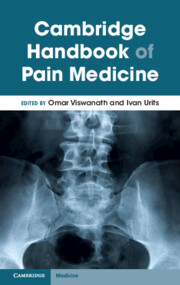Book contents
- Cambridge Handbook of Pain Medicine
- Cambridge Handbook of Pain Medicine
- Copyright page
- Contents
- Contributors
- Pain Handbook Introduction
- Part I Introduction to Pain: Pain Signaling Pathways
- Part II Common Categories of Pharmacologic Medications to Treat Chronic Pain
- Part III Chronic Pain Conditions Head and Neck
- Part IV Spine
- Part V Extremities
- Chapter 18 Carpal Tunnel Syndrome
- Chapter 19 Adhesive Capsulitis of the Shoulder
- Chapter 20 Thoracic Outlet Syndrome
- Chapter 21 Osteoarthritic Hip Pain
- Chapter 22 Osteoarthritic Knee Pain
- Chapter 23 Chronic Ankle and Foot Pain
- Chapter 24 Plantar Fasciitis
- Chapter 25 Phantom Limb Pain
- Part VI Misc
- Part VII Adjunctive Therapy
- Index
- References
Chapter 25 - Phantom Limb Pain
from Part V - Extremities
Published online by Cambridge University Press: 01 December 2023
- Cambridge Handbook of Pain Medicine
- Cambridge Handbook of Pain Medicine
- Copyright page
- Contents
- Contributors
- Pain Handbook Introduction
- Part I Introduction to Pain: Pain Signaling Pathways
- Part II Common Categories of Pharmacologic Medications to Treat Chronic Pain
- Part III Chronic Pain Conditions Head and Neck
- Part IV Spine
- Part V Extremities
- Chapter 18 Carpal Tunnel Syndrome
- Chapter 19 Adhesive Capsulitis of the Shoulder
- Chapter 20 Thoracic Outlet Syndrome
- Chapter 21 Osteoarthritic Hip Pain
- Chapter 22 Osteoarthritic Knee Pain
- Chapter 23 Chronic Ankle and Foot Pain
- Chapter 24 Plantar Fasciitis
- Chapter 25 Phantom Limb Pain
- Part VI Misc
- Part VII Adjunctive Therapy
- Index
- References
Summary
Phantom limb pain (PLP) is a common source of distress and discomfort post-amputation. Up to 85% of amputees will experience PLP at some point and many cases become chronic pain conditions. While the pain has been well documented for decades, the exact pathophysiology is still unclear, and thus hindering a more accurate means of treatment. Patients with significant pain in the limb pre-amputation, lack of psychological counseling, and more proximal amputations in general seem to be more prone to pain; however, the presentation of PLP varies greatly from case to case. There are many noninvasive therapies, exercises, and medications that are recommended as first-line treatment, but the most effective and best-evidenced treatments involve electrical stimulation of peripheral nerves. Despite this lead on a promising treatment, the quality of evidence supporting or refuting any given modality is overall weak and requires much more homogenous study to truly be analyzed for efficacy.
- Type
- Chapter
- Information
- Cambridge Handbook of Pain Medicine , pp. 205 - 212Publisher: Cambridge University PressPrint publication year: 2023

